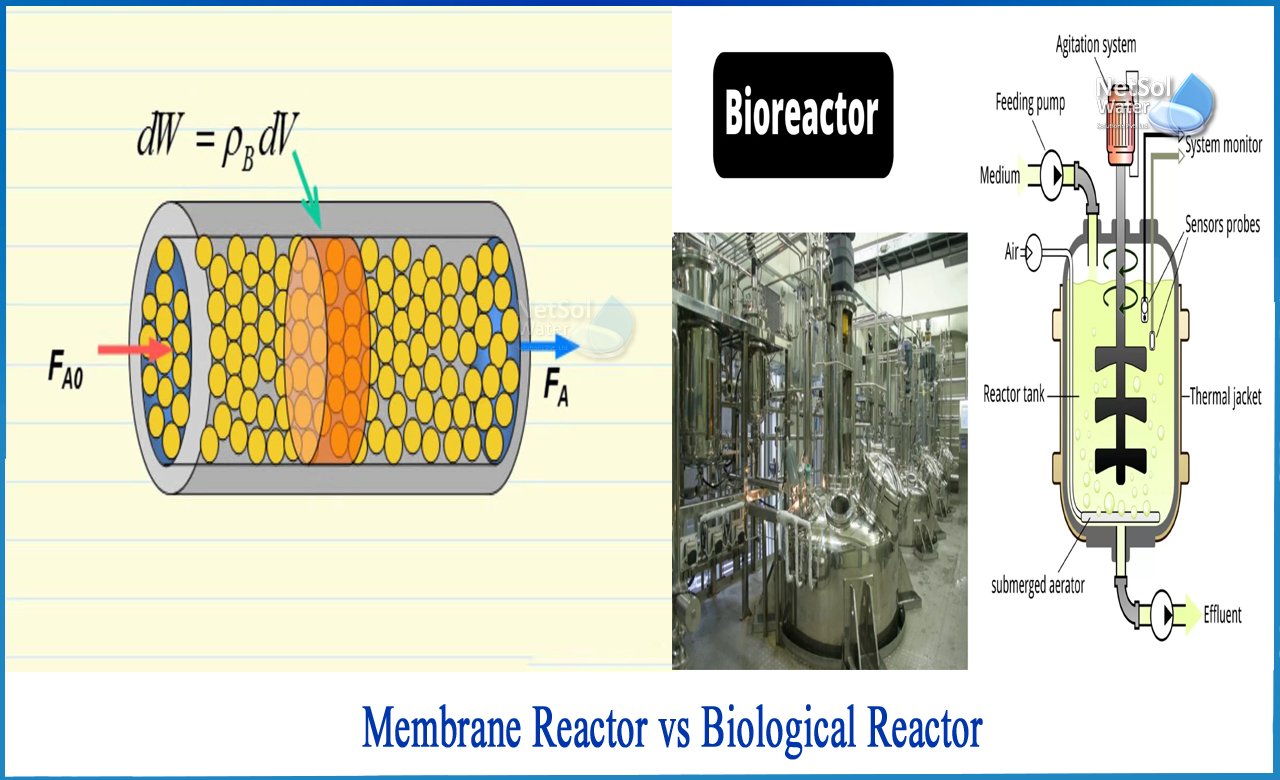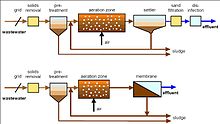How Membrane Bioreactor Can Improve the Quality of Wastewater Treatment
How Membrane Bioreactor Can Improve the Quality of Wastewater Treatment
Blog Article
The Advantages of Membrane Layer Bioreactors in Sustainable Wastewater Administration
Membrane bioreactors (MBRs) stand for an essential development in lasting wastewater management, successfully merging biological treatment with innovative membrane layer filtering innovation. As the need for lasting services escalates, checking out the diverse benefits of MBRs may reveal unforeseen implications for the future of wastewater treatment systems.
Overview of Membrane Bioreactors
Membrane layer bioreactors (MBRs) stand for a considerable innovation in wastewater therapy technology, integrating biological destruction with membrane layer purification to improve the performance of the therapy process. This ingenious system combines the advantages of traditional triggered sludge processes with membrane modern technology, permitting enhanced solid-liquid splitting up. MBRs make use of semi-permeable membrane layers to different treated water from biomass, causing premium effluent that can be recycled or securely discharged into the atmosphere.
The operational layout of MBRs typically entails a bioreactor where microorganisms break down organic matter, followed by a membrane layer device that filterings system the mixed alcohol. This arrangement not only decreases the impact of the treatment facility yet also enables greater biomass concentrations and decreased hydraulic retention times. Furthermore, MBRs can treating a broader series of pollutants, consisting of pathogens and nutrients, making them ideal for various applications, from local wastewater therapy to commercial effluent handling.
The assimilation of MBRs into wastewater monitoring systems is a measure of an expanding fad towards lasting and reliable methods in ecological engineering. Their capability to produce high-grade effluent while decreasing room requirements settings MBR innovation as a key player in modern-day wastewater treatment services.
Boosted Effluent Quality

The membrane layer filtering process functions as a physical barrier, allowing the retention of microbes and particle matter, which adds to a clearer and cleaner effluent (Membrane Bioreactor). Furthermore, MBRs operate at greater biomass focus than conventional activated sludge systems, promoting much more reliable biodegradation of contaminants. This results in a reduction in biochemical oxygen need (BODY) and overall suspended solids (TSS) levels in the final effluent
Furthermore, MBRs demonstrate superb performance in treating challenging wastewater compositions, such as commercial effluents and wastewater with high nutrient lots. Because of this, the effluent created is typically of better, allowing for more flexible disposal alternatives and reduced ecological influence. Eventually, the enhanced effluent high quality achieved with MBR technology underscores its vital role ahead of time sustainable wastewater management techniques.
Water Reuse Opportunities
The top notch effluent generated by membrane layer bioreactors (MBRs) opens up significant chances for water reuse in different applications. MBRs effectively remove contaminants, consisting of virus, suspended solids, and raw material, resulting in treated water that meets or exceeds governing criteria for reuse. This top quality allows for the implementation of water recycling efforts throughout varied industries.
One famous application remains in agriculture, where dealt with wastewater can be used for irrigation, promoting lasting farming methods while saving fresh water resources. Furthermore, MBR-treated effluent can be used for commercial procedures such as air conditioning, cleaning, and as a procedure water resource, considerably decreasing the demand for potable water in these operations.
In metropolitan atmospheres, MBRs assist in using reclaimed water for landscape irrigation, bathroom flushing, and other non-potable uses, adding to the overall durability of supply of water systems. The combination of MBR technology in decentralized systems help in handling local water demands, especially in water-scarce areas.
Lowered Ecological Influence
How can the adoption of membrane bioreactors (MBRs) contribute to a minimized environmental influence in wastewater management? MBRs considerably improve the treatment efficiency of wastewater while reducing ecological disturbances. Membrane Bioreactor.
Additionally, MBRs run at reduced hydraulic retention times contrasted to standard systems, leading to smaller therapy plant impacts. This portable style minimizes land use, thereby preserving natural habitats and biodiversity. The procedure also produces less sludge than traditional approaches, alleviating disposal difficulties over here and reducing greenhouse gas emissions related to sludge administration.
Furthermore, MBRs facilitate the recovery of beneficial resources, such as water and nutrients, adding to a round economic situation. By allowing water reuse for irrigation or commercial procedures, MBRs help alleviate freshwater deficiency, hence advertising sustainable water make use of methods. Ultimately, the adoption of MBR modern technology stands for a significant stride in the direction of decreasing the ecological effect of wastewater management systems.
Financial Benefits of MBRs

Furthermore, MBRs assist in the production of top quality effluent, which can be reused for different applications, such as farming watering and industrial processes - Membrane Bioreactor. This reuse capability can considerably decrease water procurement prices, giving a monetary motivation for industries encountering rigorous water guidelines
The portable style of MBR systems also results in lowered land demands, which is especially useful in city areas where realty is pricey. By decreasing area, sectors and towns can save money on land procurement and maintenance expenses.
In addition, MBRs frequently require less constant maintenance and have a longer lifespan than standard systems, additionally contributing to set you back savings. In recap, the financial benefits of MBRs-- ranging from minimized operational expenses to land savings and effluent reuse-- make them a compelling option for sustainable wastewater administration, supplying both long-lasting and instant financial advantages.
Conclusion
Membrane layer bioreactors represent a transformative strategy to lasting wastewater administration, incorporating biological treatment with sophisticated membrane purification for exceptional effluent quality. Their ability for efficient impurity removal facilitates water reuse, look at this site consequently conserving important freshwater resources. Additionally, MBRs add to reduced ecological impacts through small designs and lower sludge generation. Economic benefits better improve their viability, making MBRs an encouraging option for attending to the obstacles of wastewater therapy and promoting sustainable source administration.
Membrane layer bioreactors (MBRs) represent a pivotal innovation in sustainable wastewater management, successfully anchor merging organic treatment with innovative membrane purification technology.Membrane layer bioreactors (MBRs) represent a considerable advancement in wastewater therapy modern technology, incorporating biological deterioration with membrane layer filtration to improve the efficiency of the treatment procedure.Accomplishing boosted effluent quality is one of the most substantial advantages of utilizing membrane layer bioreactors (MBRs) in wastewater treatment.Furthermore, MBRs demonstrate exceptional efficiency in treating difficult wastewater structures, such as industrial effluents and wastewater with high nutrient tons.Incorporating membrane bioreactors (MBRs) into wastewater administration not just decreases ecological influence but also provides substantial economic advantages.
Report this page